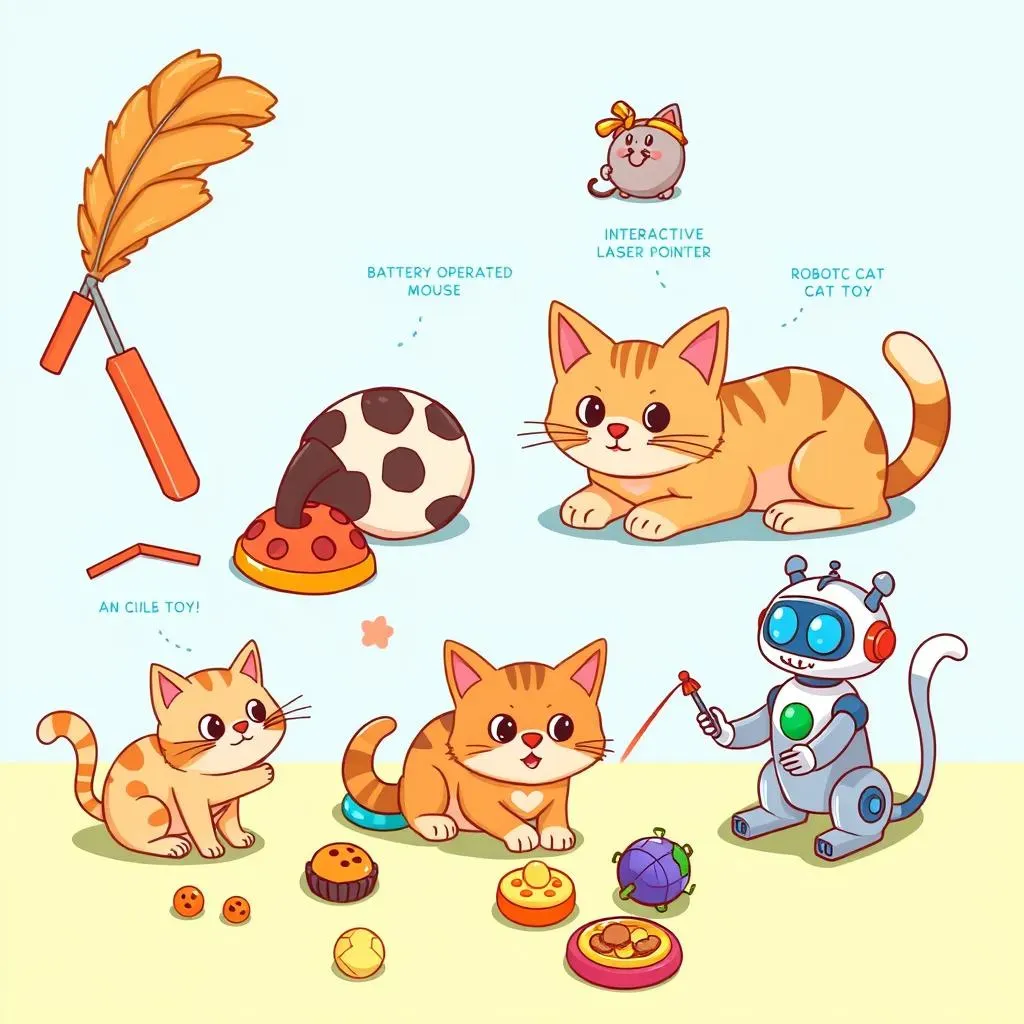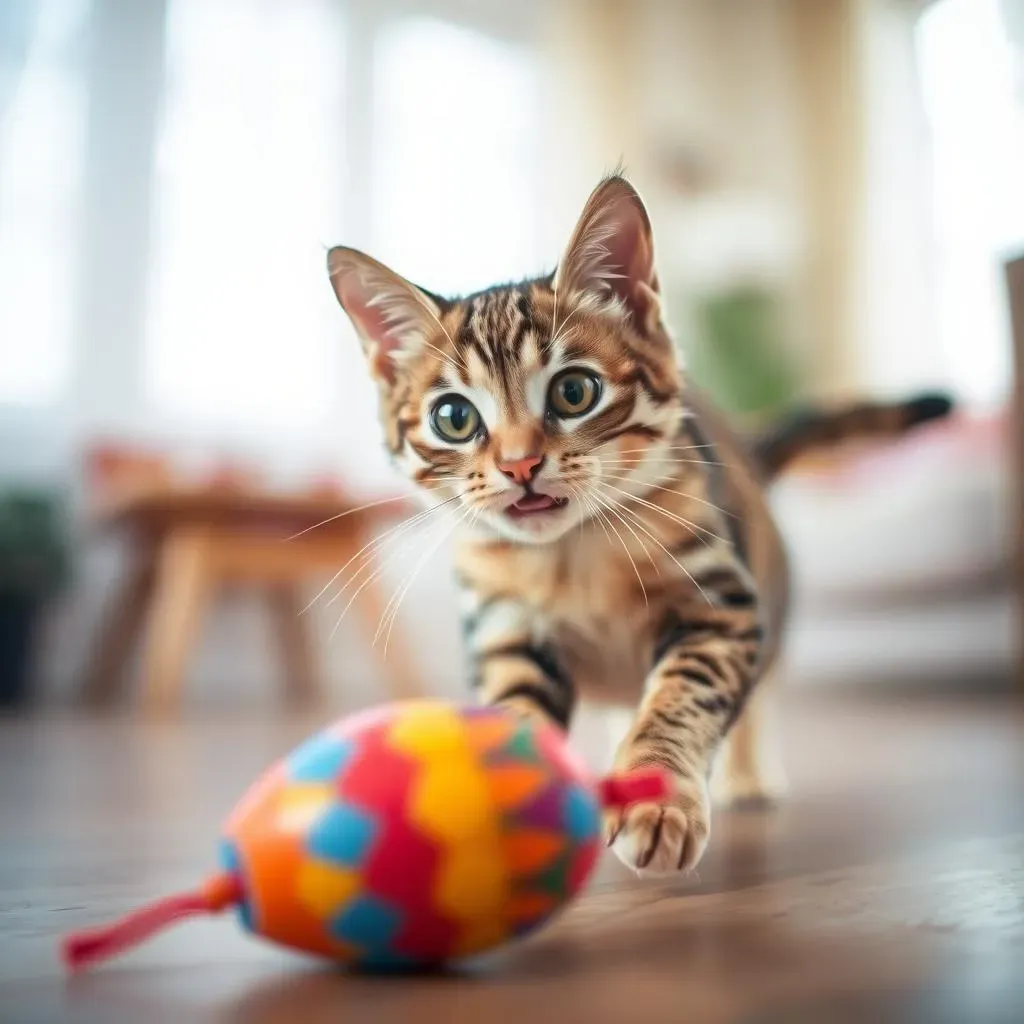Table of Contents
Ever watched your cat stare blankly at a wall, a tiny hunter trapped in a world of boring? I have, and it's not pretty. We all know cats are natural predators, wired to chase, pounce, and stalk. But what happens when their prey is just a dust bunny under the couch? That's where the magic of "toys that move for cats" comes in. These aren't just any playthings; they're tools to unlock your cat's inner tiger, keeping them active, entertained, and out of trouble (mostly). This article is your guide to understanding why these toys are essential, what types are out there, and how to use them to keep your feline friend engaged. We'll explore everything from simple, battery-powered mice to high-tech interactive lasers, ensuring your cat gets the workout and mental stimulation they crave. So, get ready to transform your living room into a thrilling jungle, and let's get your cat moving!
Why Toys That Move Are a MustHave for Your Cat

Why Toys That Move Are a MustHave for Your Cat
Let's face it, a bored cat is a mischievous cat. And sometimes, a destructive one. I've seen my own feline friend, a fluffy terror named Mittens, turn a perfectly good roll of toilet paper into a blizzard of fluff. It's not that they're bad, it's just that they have pent-up energy and a natural hunting instinct that needs an outlet. Toys that move provide that much-needed stimulation. Think of them as a way to bring the great outdoors inside, without the actual mess of dirt and leaves. These toys mimic the unpredictable movements of prey, triggering their predatory instincts and giving them a healthy dose of exercise, both physically and mentally. It's not just about keeping them busy, it's about fulfilling their natural needs and preventing boredom-related behaviors.
Ever notice how a cat perks up at the sight of a fluttering feather or a scurrying bug? It’s not just random fascination; it’s deeply ingrained in their DNA. Toys that move tap into that primal drive, offering a satisfying chase and pounce experience. This isn’t just about burning energy (although that’s a huge plus!), it’s about giving them a way to express their natural behaviors. A cat that gets to “hunt” and “catch” their toys is a happier, healthier cat. It's like providing them with a mini-adventure every day, right in the comfort of your home. This kind of engagement can also help reduce stress and anxiety, making for a calmer, more content kitty overall. Plus, let’s be honest, watching them go full predator mode on a toy is endlessly entertaining for us humans too.
Benefit | Why It Matters |
|---|---|
Reduces Boredom | Prevents destructive behaviors |
Provides Exercise | Keeps cats physically healthy |
Stimulates Hunting Instincts | Satisfies natural behaviors |
Reduces Stress | Promotes calmer, happier cats |
Types of Moving Cat Toys: From Simple to HighTech

Types of Moving Cat Toys: From Simple to HighTech
Okay, so you're ready to dive into the world of moving cat toys? It's a wild ride, trust me. You've got your basic, no-frills options, like the classic wand toy with feathers or ribbons. These are simple, but they're effective because you're the one making it move, mimicking the erratic flight of a bird or the slithering of a mouse. Then you've got the battery-operated toys, like little mice that scurry across the floor or balls that roll around on their own. These are great for when you're busy, but they lack that interactive element that some cats crave. And then, we get into the high-tech stuff: interactive lasers, puzzle toys that dispense treats as they move, and even robotic companions designed to play with your cat while you're away. It's like a whole new world of cat entertainment!
Don't think that more expensive is always better, though! I've seen cats completely ignore a fancy electronic toy and go nuts for a crumpled piece of paper. It really depends on your cat's personality. Some are all about the chase, while others are more into the puzzle aspect. It's a bit like trying to figure out what your kid wants for Christmas; sometimes you nail it, and other times, they're just as happy with the box. The key is to experiment and see what gets your cat engaged. We'll talk more about that in the next section. For now, let's just say that the options are vast and varied, so you're sure to find something that your feline friend will love.
Toy Type | Description | Best For |
|---|---|---|
Wand Toys | Feathers, ribbons on a stick | Interactive play, mimicking prey |
Battery-Operated Mice/Balls | Self-propelled toys | Independent play, busy owners |
Interactive Lasers | Projects a moving light | Chase-loving cats, quick play sessions |
Puzzle Toys | Toys that move and dispense treats | Smart cats, mental stimulation |
Robotic Companions | Automated toys for when you're away | Cats that need constant engagement, busy owners |
Keeping Your Cat Engaged: Tips for Using Toys That Move

Keeping Your Cat Engaged: Tips for Using Toys That Move
Rotate, Rotate, Rotate!
Okay, you've got a treasure trove of moving toys, that's awesome! But, here's the thing: cats get bored easily, like, *really* easily. Imagine eating the same meal every single day. You'd probably start eyeing the dog's kibble, right? Same with toys. If your cat sees the same laser dot dancing across the floor every day, they will lose interest. The key is rotation. Don't leave all the toys out at once. Instead, keep a few in rotation, and swap them out every few days or weeks. This keeps things fresh and exciting, making each toy feel "new" again. It's like a surprise party every time you pull out a different toy. And trust me, your cat will appreciate the variety.
Another tip? Don’t just leave the toys on the floor. Engage with them! Use the wand toys to mimic the movements of prey, making it dart, hide, and jump. If you're using an automatic toy, try placing it on different surfaces or in different areas of the room to change up the environment. It’s all about making the “hunt” as realistic and engaging as possible. Think of yourself as a master puppeteer, orchestrating the perfect play session. Also, don't underestimate the power of a good "capture." Let your cat actually catch the toy sometimes. It's a huge confidence boost for them, and it makes the game more rewarding. Just be sure to supervise them with smaller toys to prevent swallowing. Safety first, always!
Tip | Why It Works |
|---|---|
Rotate Toys | Prevents boredom, keeps things fresh |
Engage Actively | Makes play sessions more exciting |
Vary the Environment | Stimulates their senses |
Allow a "Capture" | Boosts confidence and satisfaction |
Short and Sweet Sessions
Cats aren't built for marathons, they're sprinters. Their natural hunting style is bursts of energy followed by a nap. So, don’t expect them to play with a moving toy for hours on end. Instead, aim for short, intense play sessions, maybe 10-15 minutes at a time. It's better to have a few high-energy sessions throughout the day than one long, boring one. This keeps them engaged and prevents them from getting burnt out. Think of it like interval training – bursts of activity followed by rest. It's more effective and more fun for everyone.
Also, pay attention to your cat's body language. Are they panting and looking tired? Time to stop. Are they losing interest and wandering off? Time to switch to a new toy or end the session. It’s all about reading their cues and adapting your strategy. Some cats are more playful in the morning, while others prefer an evening session. Experiment and find what works best for your feline friend. And remember, play should be fun for both of you. If you're feeling stressed or rushed, your cat will pick up on that. So, make sure you’re relaxed and ready to enjoy the play session. After all, it's a great bonding experience for both of you.
- Keep play sessions short and intense.
- Pay attention to your cat's body language.
- Adapt to their preferences.
- Make sure play is fun for both of you.